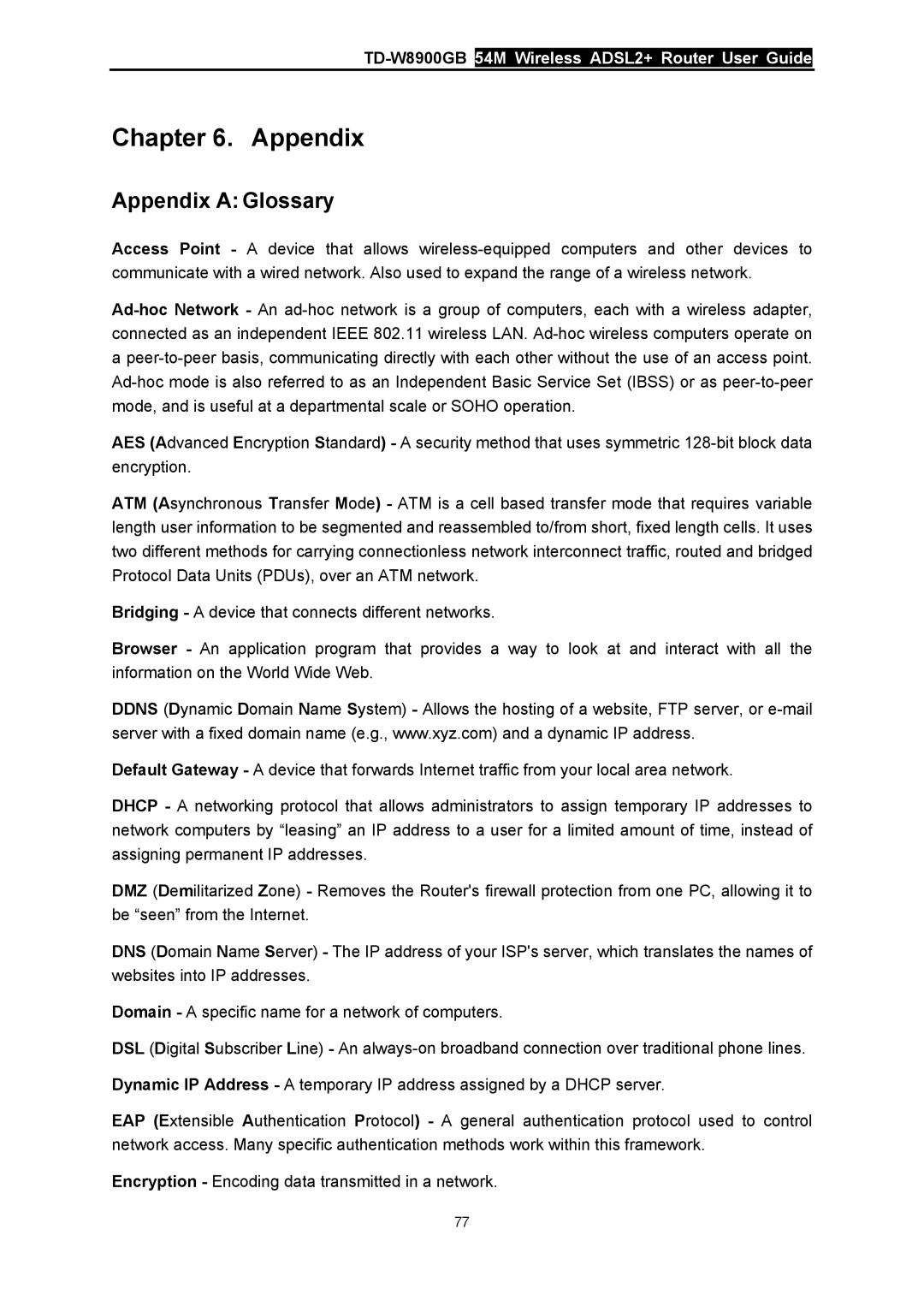TD-W8900GB 54M Wireless ADSL2+ Router User Guide
Chapter 6. Appendix
Appendix A: Glossary
Access Point - A device that allows
AES (Advanced Encryption Standard) - A security method that uses symmetric
ATM (Asynchronous Transfer Mode) - ATM is a cell based transfer mode that requires variable length user information to be segmented and reassembled to/from short, fixed length cells. It uses two different methods for carrying connectionless network interconnect traffic, routed and bridged Protocol Data Units (PDUs), over an ATM network.
Bridging - A device that connects different networks.
Browser - An application program that provides a way to look at and interact with all the information on the World Wide Web.
DDNS (Dynamic Domain Name System) - Allows the hosting of a website, FTP server, or
Default Gateway - A device that forwards Internet traffic from your local area network.
DHCP - A networking protocol that allows administrators to assign temporary IP addresses to network computers by “leasing” an IP address to a user for a limited amount of time, instead of assigning permanent IP addresses.
DMZ (Demilitarized Zone) - Removes the Router's firewall protection from one PC, allowing it to be “seen” from the Internet.
DNS (Domain Name Server) - The IP address of your ISP's server, which translates the names of websites into IP addresses.
Domain - A specific name for a network of computers.
DSL (Digital Subscriber Line) - An
Dynamic IP Address - A temporary IP address assigned by a DHCP server.
EAP (Extensible Authentication Protocol) - A general authentication protocol used to control network access. Many specific authentication methods work within this framework.
Encryption - Encoding data transmitted in a network.
77
